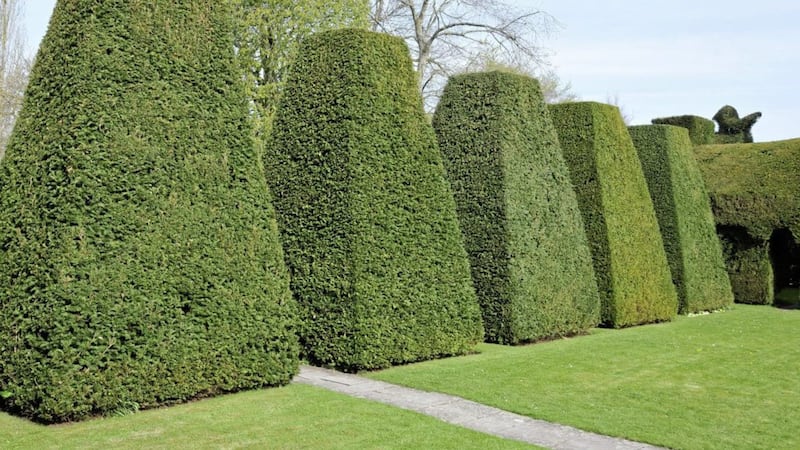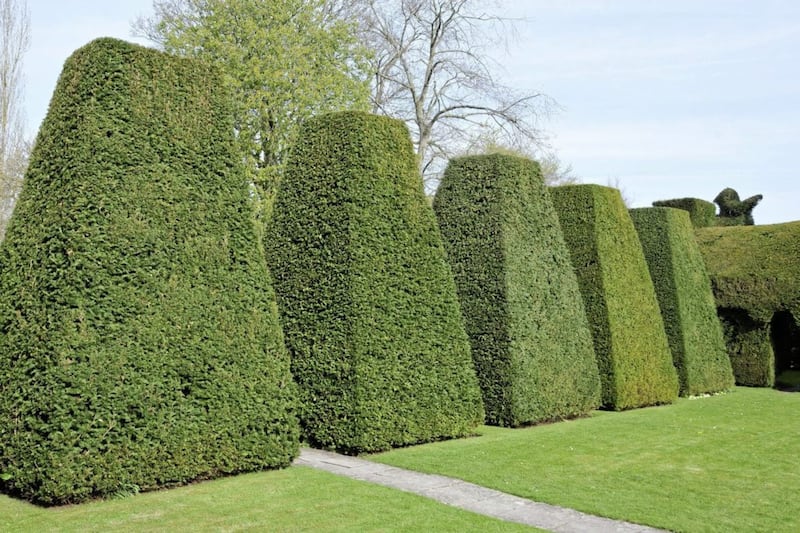I HAVE to say that not even the revered Monty Don can convince me of topiary’s merits. The Gardeners’ World host’s clipped yew cones are a rarely seen feature of his garden, as they are situated at the front of his house away from where the series is shot.
Monty clips his 26 yew cones in late summer using sharp shears and electric clippers. In his book Gardening at Long Meadow he describes the process and makes it sound like good craic – and very therapeutic – but when I see the final result I feel distinctly underwhelmed.
Yet topiary – the art of cutting of trees and shrubs into ornamental shapes – is apparently making a comeback, which is something it has managed to do at various intervals since it was first practised back in Roman times.
The Roman patricians employed a skilled topiarius on their staff, whose function was the maintenance of ornamentally clipped bushes and trees – known as topia. Renaissance Italy saw an upsurge of interest in the form, which has been in and out fashion ever since. Nowadays topiary is viewed by its fans as an imaginative and creative way to bring evergreen structure, as well as wit and fun, to the garden – though some examples do stretch the bounds of taste a little.
Box (Buxus), yew (Taxus) and laurel (Laurus) are the main species used in Ireland and Britain for ornamental clipping, but other shrubs can respond well too. These three have the advantage of being evergreen, which gives the effect year-round, as well as being readily available in shaped forms from garden centres and nurseries.
Of the three, yew is the toughest, tolerating acid or alkaline soil conditions, sun or shade, dry conditions and urban pollution. However, all parts of the plant are toxic if eaten. Box is happy as long as it doesn’t have to cope with full sun and dry soil, in which case leaves become dull or scorched. Laurel is only hardy down to –5C so is best kept out of cold winds. In areas with harsher winter conditions, keep clipped laurels in large containers and move them into a greenhouse over winter if possible.
The imagination of topiary enthusiasts seems to know no boundaries. Creations include pianists at their pianos, horses and jockeys, steam trains – they can be thoughtful or entertaining, restrained or whacky.
Personally, I’ll be pushed to practice even the most mundane topiary, in the shape of formal hedging or an arch fashioned from mature trees and shrubs.
However, those seeking something slightly out of the ordinary may wish to cut battlements into their hedge for a castle theme, while the more adventurous can experiment with geometric shapes or lifelike impressions crafted from the living plants. Container-growing adds to the flexibility of this approach and makes it possible to adorn steps, patios or drives.
If you're planning to have a go, start by studying other people’s work, preferably in the flesh and in three dimensions. You can begin by buying a small box tree and practice clipping it. Box fashioned into a spiral has become very popular in an urban setting and is among the easiest shapes to create.
Simply tie string to the top and wind it round and downwards like a helter skelter circled around and down to outline the shape, and get cutting with some topiary shears.
For more adventurous shapes you can buy elaborate 3D frames for the shrub to grow around. Specialist nurseries will supply shrubs and trees which are already shaped but these off-the-shelf varieties can be expensive and tend to take much of the fun out of topiary.



